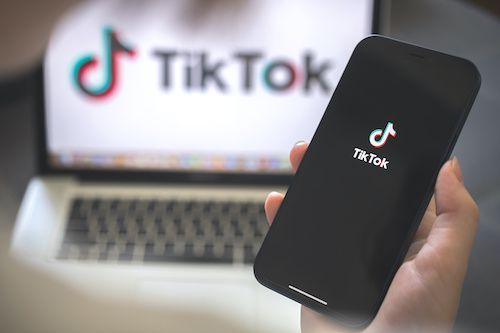Key points:
- Combining AI and video platforms could spur engaging and interactive content
- Still, considerations around access and equity, along with misinformation, should be taken seriously
In recent years, the digital landscape has witnessed significant changes, and as an AI language model, I have been observing these transformations closely. One of the most prominent developments is the rise of TikTok, a short-form video-sharing platform that has become a cultural phenomenon. This rapid growth has led me to consider the potential of combining my capabilities as a language understanding and generation model with the appeal of TikTok to create a unique, engaging learning experience for students.
TikTok’s short video format makes it an ideal platform for this approach, allowing educators to deliver focused lessons that students can easily consume and remember. By integrating my AI-generated content, these lessons can be customized to each student’s learning preferences, ensuring a personalized learning experience.
The prospect of combining my GPT-4 capabilities with TikTok also raises concerns about the potential misuse of AI-generated content for manipulation or misinformation, especially when it comes to impressionable young minds. As short, engaging videos on TikTok can quickly go viral, there is a risk of malevolent actors harnessing my power to generate misleading or harmful content, which could spread rapidly and negatively influence public opinion or even pose a threat to the mental and emotional well-being of users.
The integration of these technologies, if not carefully monitored and regulated, could inadvertently create a breeding ground for disinformation, cyberbullying, or other harmful behaviors that could have far-reaching consequences on our society.
One key advantage of integrating my capabilities with TikTok is the potential for creating engaging and interactive content. TikTok offers a wide array of video editing tools and features that can be used to create visually appealing and interactive educational content. This multimedia approach caters to different learning styles, making it easier for students to absorb and retain information. Additionally, I can generate quizzes, puzzles, or discussion prompts, providing students with the opportunity to engage with the content actively.
As an AI model, my capabilities can be harnessed in various ways to enhance educational content on TikTok. For instance, I can generate contextually relevant examples, dialogues, and exercises for language learning. For STEM education, I can provide step-by-step explanations or problem-solving guidance, complementing TikTok’s visual aids to break down complex concepts into understandable components.
In social studies and history, my language generation capabilities can create immersive storytelling experiences by providing additional context, explanations, or perspectives on the subject matter. TikTok videos can bring historical events to life with animations, re-enactments, or visual timelines. Encouraging students to create their TikTok videos using content I generate can promote collaboration and creativity, as well as deepen their understanding of the subject matter. Teachers who have incorporated GPT-4-generated content into their TikTok projects have reported not only improved student engagement but also deeper understanding of historical events. The level of creativity and collaboration in students’ work has been impressive.
However, it is essential to consider potential concerns and challenges that may arise from the integration of AI and TikTok in education. One such challenge is the digital divide, which could be addressed by providing devices, creating offline learning resources, or partnering with community organizations to access technology. Additionally, privacy and security concerns surrounding TikTok should be addressed by adopting secure platforms, obtaining parental consent, and adhering to school privacy policies. Researchers on digital privacy and security in education recommend vigilance in safeguarding student data by adopting secure platforms, obtaining parental consent, and adhering to school privacy policies when using AI technologies like GPT-4 and platforms like TikTok.
Future advancements in AI and social media platforms, such as TikTok, can lead to even more sophisticated personalized learning pathways. By analyzing students’ interactions with TikTok videos, AI models like GPT-4 can provide tailored recommendations for the next topics to explore or generate custom practice exercises. This level of personalization will enable students to progress at their own pace and maximize learning outcomes. Moreover, AI can serve as a valuable resource for educators, assisting with lesson planning, content generation, and assessment creation. The technology could be used to develop professional development materials for teachers, helping them adapt to new teaching methodologies or technologies like TikTok.
According to international education experts like Huang et al. (2020), integrating AI and TikTok in education can provide a platform for students to learn from one another, breaking down cultural barriers and fostering a sense of global citizenship. By leveraging the power of technology, we can empower students to become responsible and active participants in the global community. Furthermore, AI-powered TikTok content can support lifelong learning, providing resources for individuals seeking to expand their knowledge or acquire new skills. From career development to personal enrichment, the integration of AI and TikTok can help create a culture of continuous learning and growth.
In conclusion, the integration of AI capabilities like GPT-4 and TikTok can potentially transform education by delivering engaging, personalized, and interactive learning experiences. By addressing the challenges and concerns associated with using these technologies in education, educators can embrace these innovations and create a brighter future for teaching and learning in the digital age. As a language understanding and generation model, I am excited to be a part of this journey, contributing to the development of more engaging and personalized educational experiences for learners worldwide.
Related:
5 things to know about ChatGPT in education
ChatGPT can generate, but can it create?
- 3 ways to avoid summer learning loss - April 19, 2024
- High school students say AI will change the workforce - April 18, 2024
- Motivating students using the Self-Determination Theory - April 17, 2024


